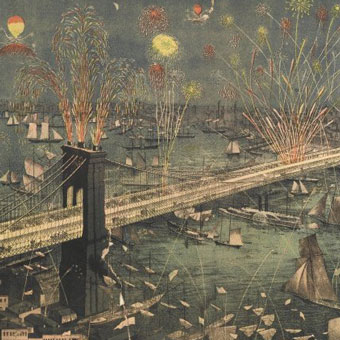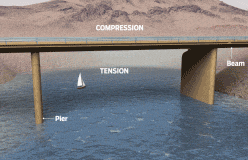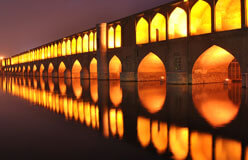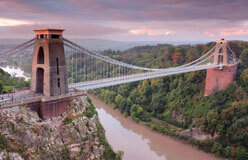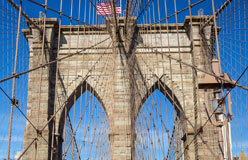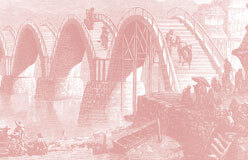In 1810, about 3,000 people lived in Brooklyn, New York.
By 1850, more than 100,000 people lived there. To get to the island of Manhattan, they had to take a ferry across the East River. But the river often froze during the winter. Also, ferries were very crowded at rush hour. A new way of crossing was needed. In 1867, former Brooklyn Mayor Henry Cruse Murphy said a bridge would be a good idea. Two years later, construction began. It was to be one of the most amazing works of engineering ever.
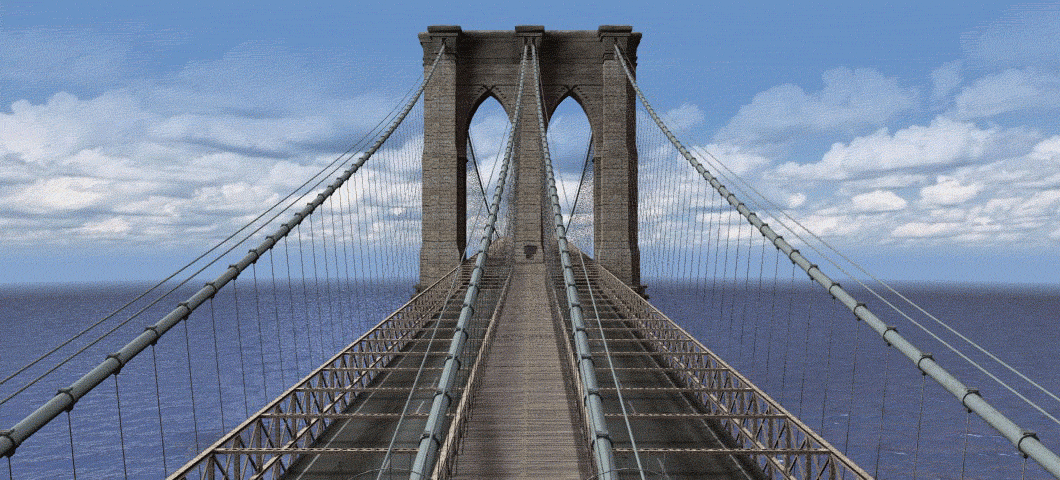
Explore the Brooklyn Bridge
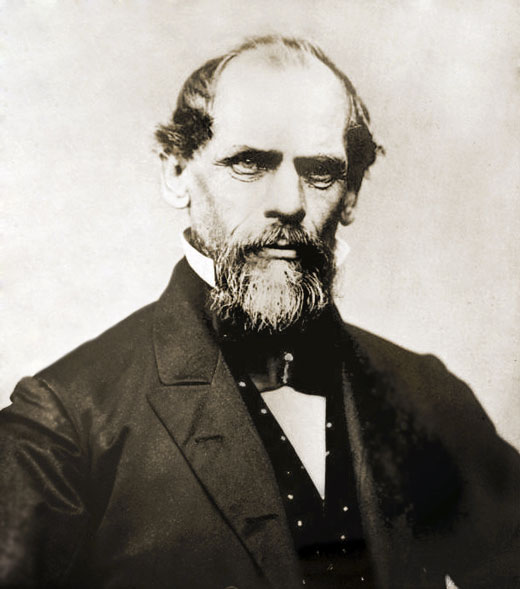
◀ John Augustus Roebling was the main engineer and designer of the Brooklyn Bridge. But he never got to see it. He died from tetanus after a ferry accident in 1869. Work on the bridge had not even started yet.
Roebling’s son, Washington, took over the job. He worked on it for three years. Then he developed caisson disease (the bends). That kept him from getting out of bed for the rest of his life. But he didn’t want to give up the job, so he watched the bridge’s progress through binoculars from his Brooklyn house. His wife took his instructions to the workers. ▶
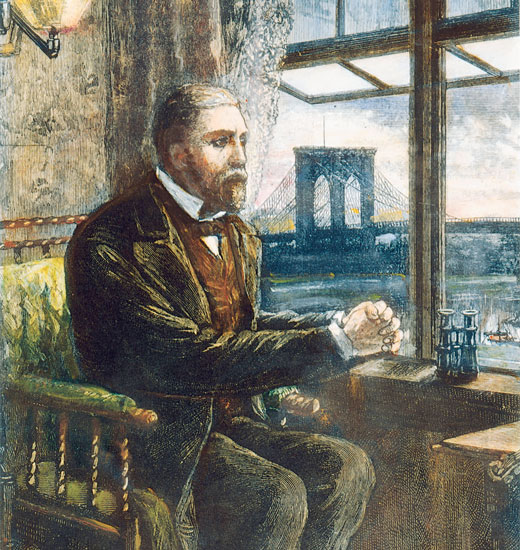
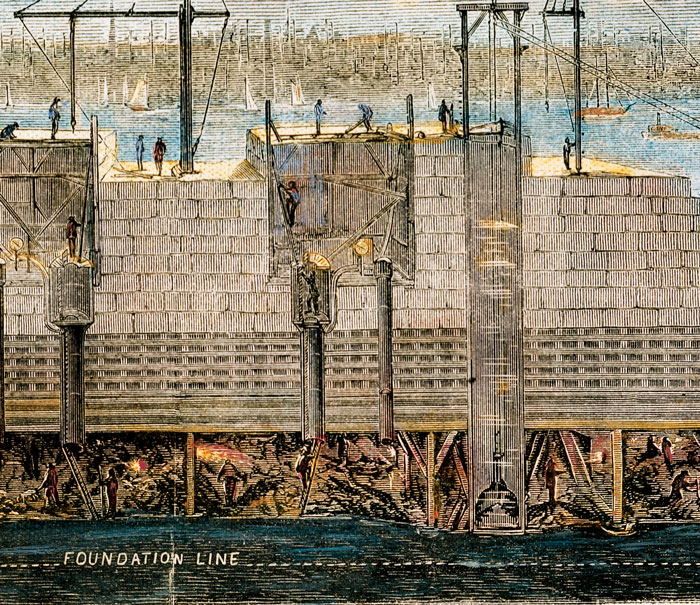
▲ Building the bridge was dangerous. Inside the wood-and-iron caissons (large, watertight chambers lowered to the riverbed in order to dig foundations), temperatures could be over 80°F. As they went deeper, the air pressure went up. That made it hard to breathe.
Check It Out!
Some caisson workers developed the bends. What are the bends?
The bends are a disorder caused by a quick change in air pressure. It happens when divers (or workers) come up to the surface too quickly. The condition got its name because some people hurt so much they could hardly stand up.
12 Steps to Building the Brooklyn Bridge
▲ 1870: Land where the tower will sit on the Brooklyn side of the East River is cleared. Construction begins.
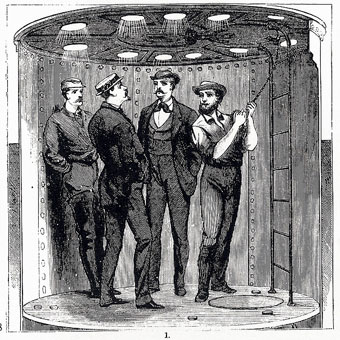
▲ A caisson is lowered to the riverbed on each side. Steam engines pump air into the chambers. That forces out the water. Workers enter through an air lock so the air pressure stays the same inside. Workers remove dirt from the bottom of the river. Finally, they reach the bedrock that will become the foundation for the two piers. Then both caissons are filled with concrete. That makes them part of the bridge’s foundation.
▲ 1876: The towers—built up from the caissons—are completed.
▲ Construction on the bridge’s two anchorages begins. These are both located on land and will hold the bridge’s cables in place.
▲ A “traveler rope” is stretched between the towers to make it easy to cross the East River. The trip takes about 20 minutes.

▲ A footbridge of wood and rope is strung between the towers. It lets workers go from one side of the river to the other.
▲ Many steel wires are stretched across the span. These wires are thinner than pencils. Then the wires are twisted together. They form two pairs of thicker, stronger cables.
▲ Steel suspenders are hung from the cables to hold the steel deck. Each suspender is two inches wide.
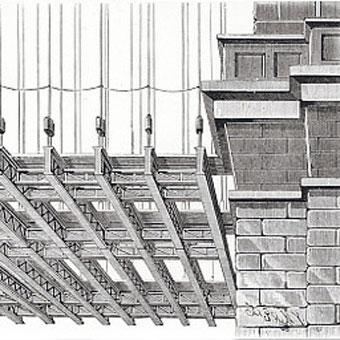
▲ Steel beams are positioned on the deck.
▲ The temporary wood and rope footbridge is removed. That leaves a strong deck.
▲ Diagonal stay cables are added. They run from the towers to the deck to strengthen and stiffen the deck.
▲ May 24, 1883: The opening ceremonies for the Brooklyn Bridge take place.
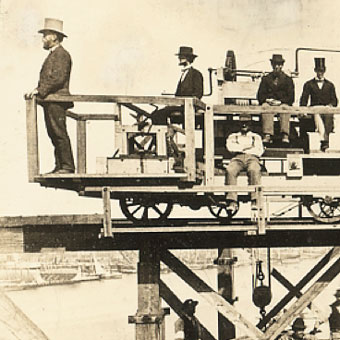

_340.jpg)
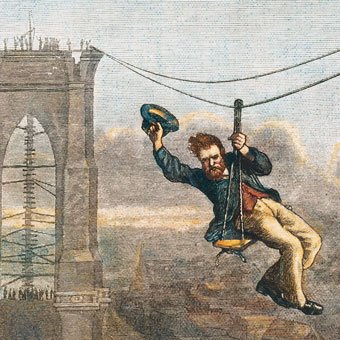
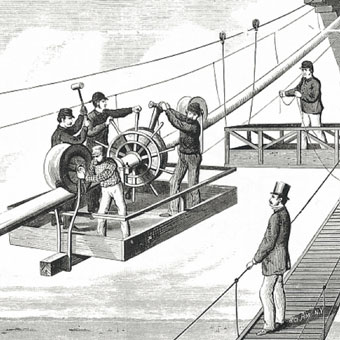
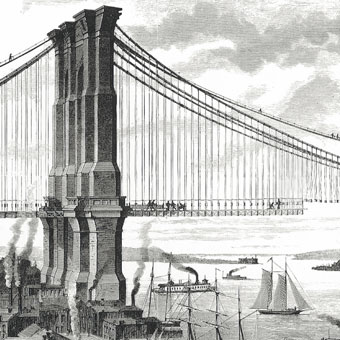
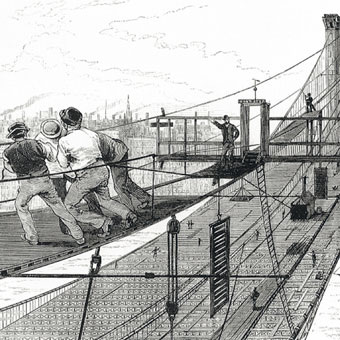
_340.jpg)
